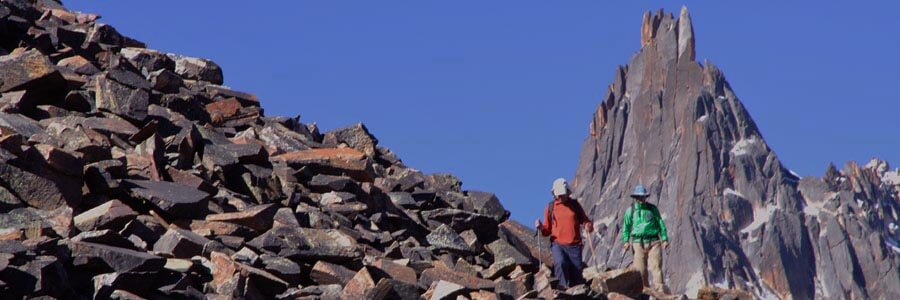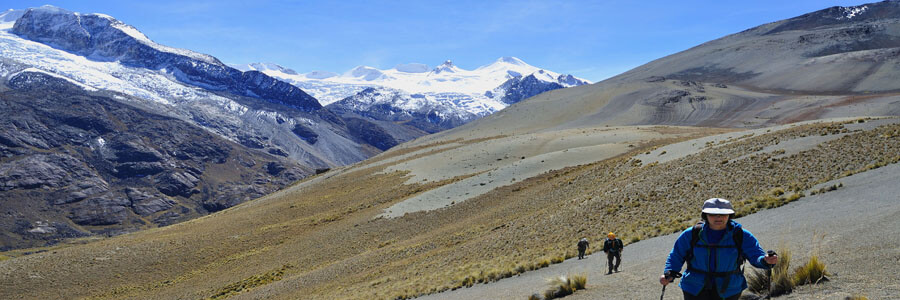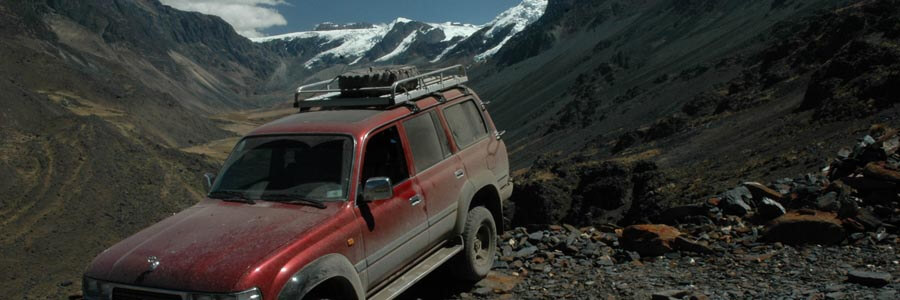Even though it could be called prehistory, we will start with the very unclear arrival of the first human beings in the Andes. There are three main theories:
a) They crossed the Bering Strait during the last glacial era,
b) They sailed the oceans and came from the Polynesia,
c) They are originally from this land and went away to populate other lands or continents
What is true is that they were in the Andes earlier than 20,000 years ago. Pictograms and ancient tools prove that they lived in caves, and were nomadic hunters, but their lives had two moments of great change:
1. Domestication of the llamas, which became very helpful to the ancient travelling hunter, providing transportation, meat, wool and skin for textiles and clothing, bones for tools and even musical instruments, blood and fat for early religious purposes, and an opportunity to trade products between different ecological levels.
2. Domestication of the land, and beginning of agriculture; Started with the periodical harvesting of wild fruits, but the discovery of the potatoes, seem to have been the most important achieve during that time, they end developing more then 300 varieties of potatoes, cultivating the Quinoa (grain rich in protein) at high altitudes, corn with about 60 different varieties, and finding natural processes to preserve food trough freeze drying.
Agriculture helps them to organize their society, families and villages politically stable are formed, and the dependence on the agriculture and nature make them to develop a kind of animism that will become their religion.
About 2,000 years before Christ, there are among others, three lines of inhabitants that could be generically called Aymaras in the High plateau of the Andes but their lifestyle make it easy to call them Chiripa, Wancarani, and Early Tiwanaco. It is only at the time of Christ when they get together and start developing the so advanced Tiwanaco Culture. At this same time, cultures like Valdivia, Olmeca, Sachin or Chavin are developed in other areas in South America; and Egypt, Mesopotamia, Grecee and Rome are flourishing in the rest of the world.
Around the time of Christ (discovered objects in Tiwanaco date from 1572 BC to 1200AD), the Aymaras find the need to have spatial places for their gods and all together start the building of the temples in Tiwanaco (Kalasasaya, Kantatallita, Akapana, Kerikala, Putuni and Pumapunku). The Tiwanacus develop sciences like natural medicine, physics including hydraulic, acoustic, astronomy, and get very skillful on architecture and other crafts. They lived a very peaceful and well-organized existence with no kings or individual leaders but a group of priests and old wise men, some people called that: “the perfect socialism”.
For an inexplicable reason they abandon their city during the Eleventh century AD. And create many small familiar groups called “señorios” They will become later the villages of this days.
The Incas appear like a hundred years later at the most sacred place of the Aymaras: The Titicaca island, later called the island of the sun by the Spaniards. From there the Incas had to look for a place to develop their Empire, which seemed to be Cusco, The quechua, language of the Incas, is then used in almost all the extension of the Andes, only the High plateau will keep Aymara even at the present times.
Besides Tiwanaco and the Incas, Mochica, Nazca, Wari, Chimu, Tolteca and Mayans, lived in South America.
The Spaniards arrive in the Andes at the end of the fifteenth century, starting the colonial time of the Andes, and lasting until the beginning of the nineteenth century when one by one all of the Andean Countries become independent.








